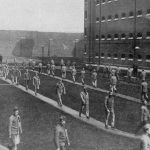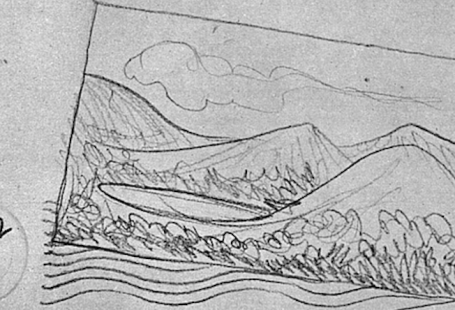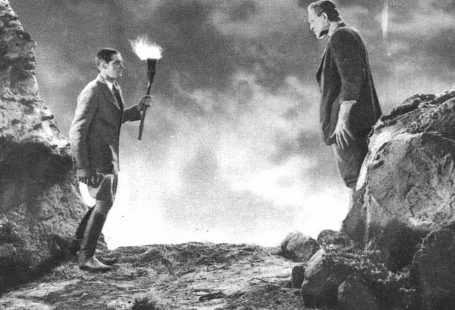This week has been a buzzing one at The Archive, as we have an incredible nine brand new titles available to search, with specialist trade union publication the Bee-Hive joining us, as well as new titles from across England, Scotland and Wales. We’ve added 108,440 new pages over the last seven days, whilst we have also been busy updating 35 of our existing titles.
So read on to discover more about our new titles from Teignmouth to Kilmarnock, and also to find out about an unlikely sport that was all the rage in the Victorian era – pedestrianism!
Register now and explore the Archive
So without any further ado, let’s find out what all that buzz is about the Bee-Hive. ‘A Weekly Newspaper of General Intelligence, and Trades’ Friendly Society, and Co-Operative Journal,’ the Bee-Hive was a trade unionist journal published between 1861 and 1878. The brainchild of prominent trade unionist George Potter, the Bee-Hive was initially edited by professional journalist George Troupe with radical trade unionist Robert Hartwell as the publication’s main contributor.
Advocating strike action, the Bee-Hive was quickly adopted as the official journal of the London Trades Council (LTC). But the newspaper was not a commercial success; by 1862 the paper only had a circulation of 2,700 and Potter himself had debts of £827. Meanwhile, disagreements were in the air between the LTC and Hartwell, the newspaper’s main contributor, the LTC believing that the Bee-Hive gave too much support to strike action. George Howell, a prominent member of the LTC, accused Hartwell and Potter of living on ‘slander and falsehoods.’
By 1865 George Potter had been accused of personal dishonesty in his reporting of an industrial dispute in North Staffordshire, and the Bee-Hive was promptly dropped by the LTC. Meanwhile, Potter went on to establish the London Working Men’s Association (LWMA), of which the Bee-Hive became the official newspaper. In 1870 the Reverend Henry Solly became editor of the newspaper, adopting a less radical tone, and a year later Potter and his critic Howell reconciled, Howell actually contributing to the publication.
In 1877 the Bee-Hive changed its title to the Industrial Review; but by 1878 the newspaper was on the verge of financial ruin. No one put up the £150 required to save the paper, and it was declared bankrupt with debts of £2,000.
So what could you find within the pages of the Bee-Hive? Well, aside from such specialist articles like ‘The Heroes of Labour’ and ‘When Will Reform Come of Age?,’ it also included lots of general, national and international news, and literary selections.
We move now to our next new specialist title of the week, the Illustrated Sporting News and Theatrical and Musical Review. Founded by London printer Edward Harrison, this title was first published on 15 March 1862 with the intent to capitalise on the growing public enthusiasm for sport in all its forms. The first edition tells of how:
At a time when sporting subjects attract so much interest in England; the present newspaper is stated to illustrate whatever is great, new, useful, or curious within the sphere of its operations…The pencil of the artist cannot have a wider field for the display of talent than that which is presented to his view in the occurrences of the sporting world.
Illustrated Sporting News and Theatrical and Musical Review | 26 April 1862
A pioneering title at the forefront of this new passion for sport amongst the public, with detailed reports and accompanying illustrations, the Illustrated Sporting News and Theatrical and Musical Review was catholic in its coverage. Within its pages you can find featured athletics, hurling, yachting, cricket, rackets, boxing, bowls, billiards, wrestling, pedestrianism, aquatics, golf, chess and coursing.
There was, of course, a theatrical element to this title, with the inclusion of the latest from London and provincial theatres. Indeed, this publication increasingly featured more from the world of theatre before its eventual close in 1870.
Illustrated Sporting News and Theatrical and Musical Review | 11 September 1869
Our next new title hails from Devon, namely the historic Teignmouth Post and Gazette. The Teignmouth Gazette was founded in 1841, positioning itself as politically neutral and appearing every Wednesday. Circulating in the mid-Devon town of Teignmouth, as well as Dawlish, Bishopsteignton, Shaldon and ‘the county generally,’ this newspaper contained arrival lists and directories for ‘the second largest watering place in Devon.’
In 1939 it merged with its rival the Teignmouth Post, an independent title which was founded in 1883, and is still running to this day.
Teignmouth Post and Gazette | 2 April 1886
Moving now to the Midlands for our next title, which goes by the name of the Birmingham Suburban Times. Established in 1884, this newspaper appeared every Saturday and cost one penny, circulating in ‘the suburban districts of Birmingham,’ namely Balsall Heath, Bordesley, Moseley, Small Heath, Acocks Green, Yardley, Solihull and Knowle. It featured serialised fiction, a ‘Ladies Column,’ ‘Agricultural Notes,’ the latest from the ‘Society Papers,’ as well as news on ‘Passing Events.’
Our next new title of the week is the Coalville Times. First published on 29 September 1893 in the Leicestershire mining town of Coalville, a product of the industrial revolution, this newspaper’s full title was the Coalville Times and Whitwick, Hugglescote and Ibstock News. The ‘first newspaper’ to ever be printed in the town, its first edition promised to offer ‘readable matter which will be as interesting and up to date as that contained in any provincial paper in the kingdom.’
Coalville Times | 22 February 1907
A vibrant local newspaper, the Coalville Times contained illustrations and such sections as ‘Field and Farm,’ ‘Witty and Wise,’ ‘Hints to Housewives,’ ‘Dress of the Day’ and ‘Bits for Boys and Girls.’ It also featured ‘Local Chit-Chat,’ notes from the garden and greenhouse, society gossip and sporting notes.
Our final new English title of the week is the North West Evening Mail. Costing one half-penny, and published every day in Barrow-in-Furness, which was historically a part of Lancashire, the North West Evening Mail contained a plethora of the latest local, national and international news. With such sections as ‘Stories of the Day’ and ‘To-Day’s Glean,’ its focus was very much on reporting the latest news possible. It also featured sections like ‘Our Letter Box,’ with correspondence from readers, ‘Games and Puzzles,’ which was aimed at children, ‘The Social Round,’ and ‘Our Daily Story.’ It also featured the latest sporting news.
We are furthermore delighted to have duo of Welsh titles joining us this week, namely the Flintshire Observer and the Llanelly and County Guardian and South Wales Advertiser. Published in Holywell, the Flintshire Observer appeared every Thursday priced at one penny. A neutral publication, it styled itself as a ‘Mining Journal and General Advertiser for the Counties of Flintshire and Denbighshire.’
Flintshire Observer | 20 January 1898
Containing ‘Farming Notes’ and ‘Gardening Gossip,’ the Flintshire Observer’s primary focus was news from the local parish councils and school boards, as well as featuring notices of births, marriages and deaths. You can also find within its pages sections like ‘Current Sport,’ with a particular focus on football, and local railway timetables.
Meanwhile, the Llanelly and County Guardian and South Wales Advertiser was established in Llanelli in 1863 as an independent Liberal publication. Circulating throughout South Wales, it had a guaranteed circulation of 3,500, and contained such sections as ‘Town Talk,’ ‘Summary of Passing Events,’ ‘American News,’ ‘Hints Upon Gardening’ and ‘Literature and the Arts.’
For our final new title of the week we travel to Scotland, and introduce you to the Kilmarnock Standard. Established in 1863 in Kilmarnock, Ayrshire and costing one penny, this Liberal publication circulated in ‘Kilmarnock and the towns and villages of Ayrshire.’ With a particularly literary bent, the Kilmarnock Standard featured original poetry and serialised fiction as well as publishing a calendar summary of upcoming local events. Within its pages you could find such sections as ‘Ayrshire Notes and Queries’ and ‘Ayrshire Agriculturalists,’ as well as children’s columns and football results.
Kilmarnock Standard | 14 May 1892
With thirty five of our existing titles updated in all this week, with new pages added from across the United Kingdom and the Channel Islands, we’ve picked out a few highlights. We’ve added over 10,000 pages to East London titles the East London Observer and the Tower Hamlets Independent and East End Local Advertiser. Meanwhile, we’ve also added a notable run of pages to the Manchester Daily Examiner and Times and Stockton-on-Tees title the Northern Weekly Gazette. Rounding off our picks for the week is the Jersey Evening Post, to which we have added over 5,000 new pages.
Popular Pedestrianism
In the Victorian era, one of the most popular sporting pursuits was pedestrianism, a brand of competitive walking which would give rise to racewalking as we know it today. Indeed, our new newspaper the Illustrated Sporting News and Theatrical and Musical Review in March 1862 goes so far to label it as an ‘essentially national sport.’
In this same article of 29 March 1862, the Illustrated Sporting News traces the rise in popularity of pedestrianism. A great early proponent of pedestrianism was Robert Barclay Allardice, a Scottish walker who was known as Captain Barclay. The Illustrated Sporting News records his achievements as follows:
Captain Barclay’s celebrated match of a thousand miles in a thousand hours must be stamped as one of those extraordinary feats which none but the most healthful and vigorous specimens of humanity could accomplish.
Captain Barclay managed to walk a thousand miles in a thousand minutes for a thousand guineas (nearly £50,000) today. Indeed, wagering formed a huge part of the sport, and funded its professional participants. And Captain Barclay was an inspiration to many, as the Illustrated Sporting News relates:
We recollect even an American female pedestrian, who came out in flaunting Bloomer costume at Aston Cross, Birmingham, many years back, when the imitation of the Barclay feat was more prevalent than it is now, in order to demonstrate to the British public that the great undertaking of the Master of Ury could be accomplished by a femme sole from the other side of the Atlantic.
And competitive walking itself branched out into many different forms, walkers competing in:
…walking against time; walking the farthest without stopping; walking from London to Brighton or any given place and back.
The most celebrated walkers were given fantastic nicknames, like George Seward the American Wounder, John Smith the Regent Street Pet, Jeremy Patterson the Flying Tailor, and William Jackson the American Deer.
Meanwhile, the Illustrated Sporting News relates how ‘noblemen and gentleman alike have accorded their patronage to pedestrianism,’ with races often undertaken at well-known institutions such as ‘Cambridge, Oxford, Eton, Harrow, Rugby and Shrewsbury.’ But with the ‘power of steam,’ namely the growth of the railways, pedestrianism had extended beyond the upper classes, allowing the pedestrian to ‘gratify such health-inspiring habits in almost all directions of the United Kingdom.’
Testament to the popularity of pedestrianism is the variety of reports we found in the Illustrated Sporting News. For example, on 27 September 1862 the newspaper previewed a list of ‘Matches to Come,’ as seen below.
Illustrated Sporting News and Theatrical and Musical Review | 27 September 1862
Meanwhile, on 6 January 1866 the same publication featured detailed reports of pedestrianism matches from across the county. For example, at Hackney Wick, a special trades match was enacted, namely the ‘Shoemakers’ Race:’
The distance was once round the grounds (270 yds), the prizes given by Mr. Baum being a fine enamelled cowhide for the first, and the various implements used in the trade, such as a new kit, lasts &c., for second and third. Long, of Bethnal Green was the winner; Webb, of Norwich, was second, and Bates, of Paddington, was third.
Elsewhere, at the New Vauxhall Grounds in Birmingham, a 21 mile walking match was set to take place between H. Smalley and G. Lester. What was particularly notable about this match was how Lester was 24 years younger than Smalley, but Smalley was ‘the long distanced champion of the Midland district.’
Illustrated Sporting News and Theatrical and Musical Review | 4 September 1869
This is how the encounter played out:
Soon after 12 o’clock they effected the start, Smalley taking the lead from the first mile, when Lester spurted forward gradually leaving his opponent in the rear. At the seventh mile (which was accomplished in 1 hour 5 min) Lester was leading by a lap (of which 158 had to be traversed) and from this point to the eleventh the competitors walked close together, but being called upon by his attendant Lester again put on an additional spurt, and stride by stride widened the distance between them, being at the completion of the fourteenth mile (walked in 2 hours 8 min) 2 laps a head. It was evident from this stage that it was a foregone conclusion for Smalley, who at the end of the eighteenth mile was compelled to yield from sheer exhaustion.
At this point, Lester was allowed to finish the race, not completing the 21 miles but victorious all the same.
And finally, at Royal Oak Park, Manchester, ‘about 250 admirers of the fleet of foot paid the admission fee’ to see Henry Webster, of Liverpool, taken on Martin Burke, of Salford. The distance to be raced was 440 yds for £25, with Burke the 5 to 4 favourite.
The Illustrated Sporting News reports on the action:
After considerable delay at the scratch, a start was effected, the favourite dashing off in the front, and he continued to hold his own until nearing the goal, when Webster overhauled him, and a most exciting struggle ensued, Webster just landing himself a winner by one yard; Burke falling through exhaustion about a yard from the tape.
We can see from the pages of the Illustrated Sporting News just how fiercely competitive the sport of pedestrianism was – with participants fainting regularly, in both long and short distance events. Also it is fascinating to read about the sums of money involved, which helps to understand another of the sport’s draws, other than its health benefits!
George Ide of North Woolwich | Penny Illustrated Paper | 23 March 1878
New Titles
Title |
|
| Bee-Hive | 1862-1875, 1877-1878 |
| Birmingham Suburban Times | 1888, 1897 |
| Coalville Times | 1893-1895, 1898, 1900-1914 |
| Flintshire Observer | 1898, 1900-1903 |
| Illustrated Sporting News and Theatrical and Musical Review | 1862, 1865-1867, 1869-1870 |
| Kilmarnock Standard | 1892 |
| Llanelly and County Guardian and South Wales Advertiser | 1869-1908 |
| North West Evening Mail | 1911 |
| Teignmouth Post and Gazette | 1886-1888, 1890-1893, 1895, 1899, 1901-1904 |
Updated Titles
This week we have updated thirty five of our existing titles.
You can learn more about each of the titles we add to every week by clicking on their names. On each paper’s title page, you can read a FREE sample issue, learn more about our current holdings, and our plans for digitisation.
You can keep up to date with all the latest additions by visiting the recently added page. You can even look ahead to see what we’re going to add tomorrow.




















